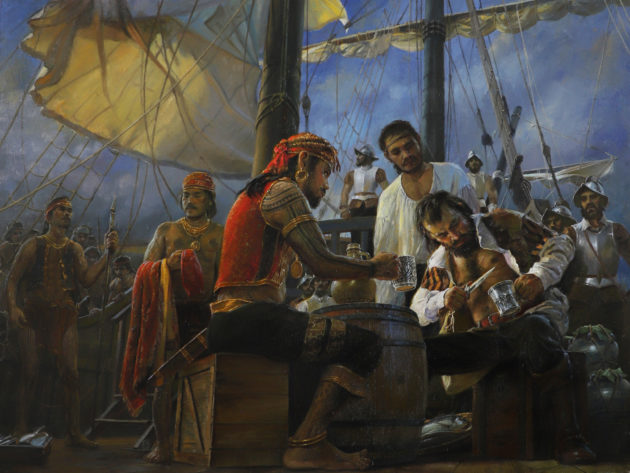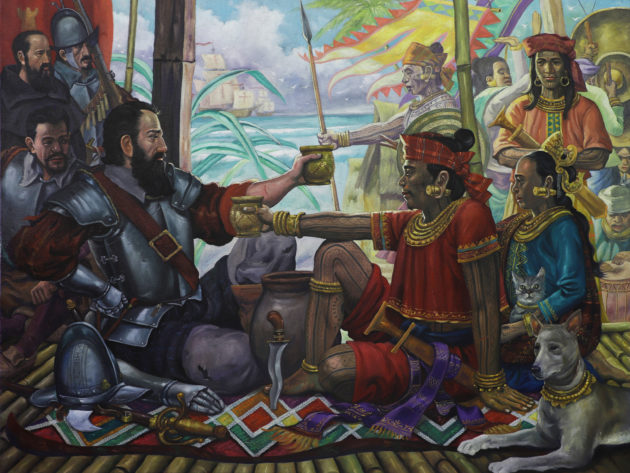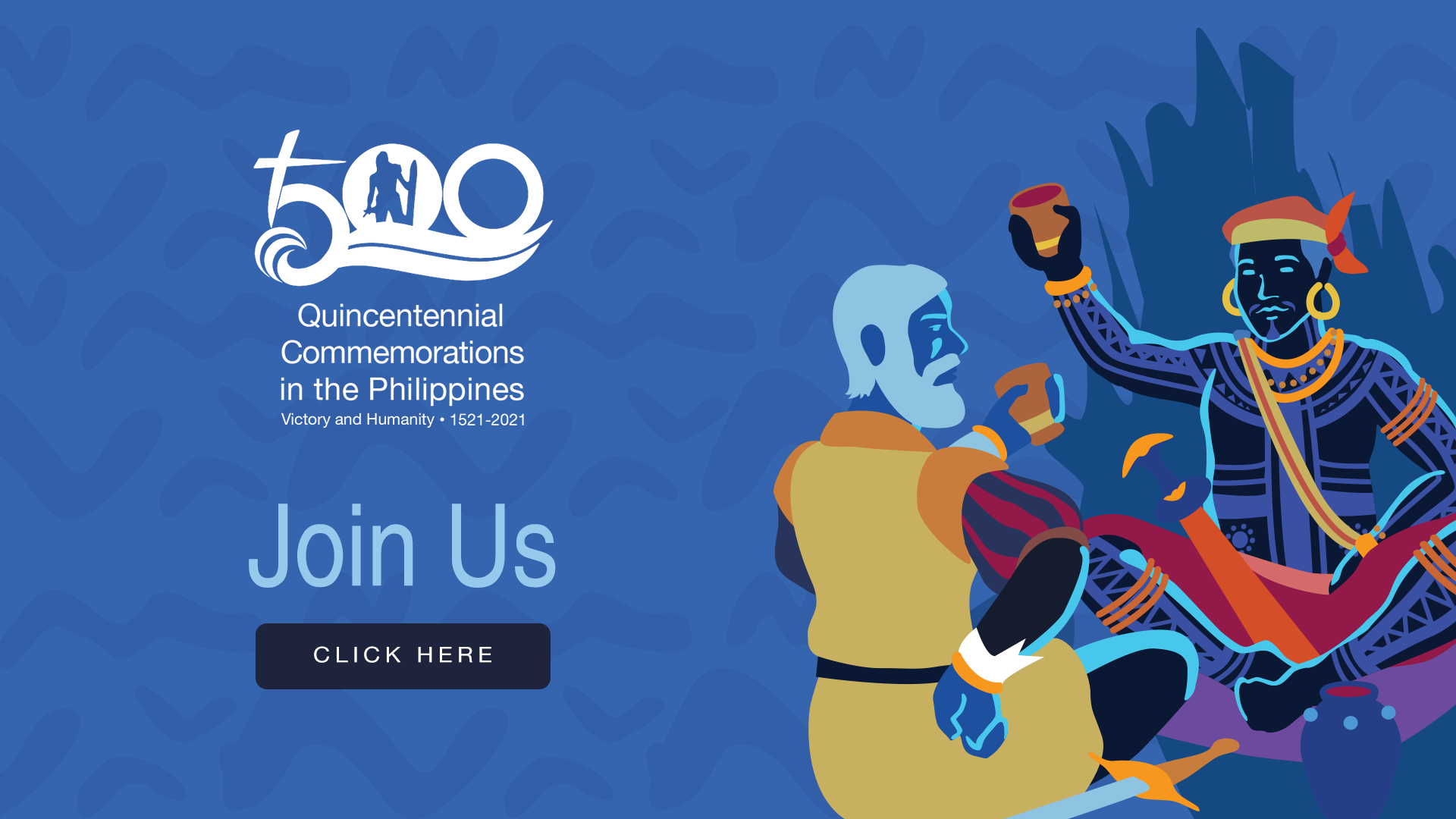A Test of Sincerity
Posted on 29 March 2021
By Van Ybiernas
Our ancestors did not easily accept the Magellan-Elcano expedition. Through the ritual called sandugo (blood compact), our ancestors tested the sincerity of the friendship the foreigners were offering. Antonio Pigafetta, Ferdinand Magellan’s chronicler, recorded the term for it as casi casi when Magellan and the rajah of Limasawa met on 28 March 1521. Part of sealing the friendship was the rajah of Limasawa’s giving of provisions to Magellan’s crew and in return, the ruler received garments and a Turkish cap from Magellan.

In 1528, Alvaro de Saavedra’s expedition, which succeeded that of Magellan, also sought provisions in Mindanao. In order to obtain such, a leader in Mindanao demanded that Saavedra undergo a blood compact. Out of distrust of each other, no blood compact happened. The opportunity for a sandugo did not arise until Miguel Lopez de Legazpi, the first governor-general of the Philippines, reached the Visayas in 1565, and he entered into a blood compact with Rajah Sikatuna of Bohol, while his other officers did the same with Rajah Soliman of Manila in 1570. The Spaniards called it pacto de sangre, which inspired Master Juan Luna to paint El Pacto de Sangre in 1886. In celebration of our ancestors’ homegrown diplomacy, the said painting welcomes world leaders ascending the stairs of the Malacañang, the seat of the Philippine President.

The blood compact was a sacred ritual to our ancestors. In this ritual, both camps would draw blood onto a vessel from an incision in their arms. The blood would then be mixed with wine and both leaders or representatives would drink from the vessel. Through this act, their blood would be symbolically shared by each other’s bodies, obliging them to acknowledge one another as siblings.
In fact, in 1570, Rajah Soliman ejected the Spaniards from Manila after breaking the blood compact. For our ancestors, honor, and trust were at stake in the blood compact. Andres Bonifacio’s “Ang Dapat Mabatid ng mga Tagalog” (‘What the Filipinos Should Know’) mentioned that blood compact was “indeed a custom” of our ancestors and that the Spaniards were “subjected” to it, “to show their sincere and absolute commitment not to betray what was agreed upon.” Unfortunately, the Spaniards breached the sacred blood compact and instead, treated our ancestors not as siblings but as slaves. That was why Bonifacio and his fellow patriots resolved that breach through a revolution in 1896.
Based on the 16th-century Boxer Codex, the blood compact’s effectivity was perpetual. This was because both parties were benefitting from each other’s trade relationship and military strength, thus preserving the status quo from the effect of deceit or fraud.

The blood compact was also linked to the coalescence of barangays (communities) into a small or large network of communities (e.g., banwa in the Visayas, bayan in Tagalog, ili in the Cordilleras) depended on blood compact. To prevent this clash, which was inevitable even among sibling rulers, the blood compact was necessary. Historian Vicente Villan writes that the blood compact is more profound in the Visayas as it is called pag-aanghod, from the word manghod meaning younger sibling. This implies, therefore, that in a blood compact one would take care of the other like a younger sibling.


Recommended Readings
Bonifacio, Andres. 1896. Ang Dapat Mabatid ng mga Tagalog. Nasa Panitikan ng Rebolusyon(g 1896); Isang Paglingon at Katipunan ng mga Akda nina Bonifacio at Jacinto, may-akda Virgilio Almario, 152-155. Quezon City: University of the Philippines Press, 1997.
Ferrer Amelia S. 2013. “Sanduguan bilang konsepto ng Pakikipagkapwa sa konteksto ng kalakalan at kapangyarihan: Ang Bohol sa ika-16 na dantaon.” Diwa E-journal 1:1, 37-57.
Loarca, Miguel de. 1979. “Relation of the Philippine Islands” in Mauro Garcia (ed), Readings in Philippine Prehistory, Volume 1. Manila: Filipiniana Book Guild, Inc.
Scott, William Henry. 1994. Barangay: Sixteenth-Century Philippine Culture and Society. Lungsod Quezon: Ateneo de Manila University Press.
Zaide, Gregorio F. 1990. Documentary Sources of Philippine History, Volume 1. Manila: National Bookstores Inc.
Van Ybiernas is an economic and public historian.

